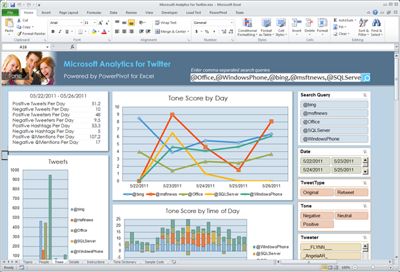Power Pivot is an add-in first introduced in Excel 2010 and now a staple part of the modern Excel. It has changed the way that we can work with and manipulate large volumes of data in Excel. In this article, we will not only answer the question of what is Power Pivot? But also why and how to use PowerPivot with real business use cases. Start the Power Pivot add-in for Excel. Go to File Options Add-Ins. In the Manage box, click COM Add-ins Go. Check the Microsoft Office Power Pivot box, and then click OK. If you have other versions of the Power Pivot add-in installed, those versions are also. Excel 2016 standalone Power Pivot add-In for Excel 2010 The Power Pivot add-in for Excel 2010 did not ship with Office, but is available as a free download: Power-Pivot add-in download. This free download works only with Excel 2010, and not with newer versions of Excel.
Powerpivot Excel 2010
Now we have imported data into PowerPivot, we can create relationships between tables. A relationship establishes how the data from different sources should be correlated. You can create relationships between data sources by joining columns that contain same data.
You can manually create relationships or let PowerPivot to automatically detects existing relationships when importing data into a PowerPivot workbook.
This demonstration continues from the previous blog; Microsoft PowerPivot for Excel 2010 – Importing Data. So if you haven’t followed the last blog, you should go back and read it now. You can downloaded sample data from Codeplex Web site.
Why Create Relationships?
We have used VLookup to link data from different tables together so that we can do our in depth analysis. You can consider relationship is another form of VLookUp.
Relationships allow you to:
- Filter data in one table by selecting data from related tables.
- Integrate data from multiple tables into a PivotTable or PivotChart.
- Easily look up values in related tables using Data Analysis Expressions (DAX) formulas.
Existing Data
You already have data from three different sources in your PowerPivot workbook:
Powerpivot Excel 2010 32 Bit
- Sales and product data.
- Product category data.
- Store information.
Create New Relationships between the Stores and Entities

- Click the Stores tab.
- Right-click the EntityId column header and select Create Relationship.
- The Table field and the Column field are auto-populated in he Create Relationship dialogue.
- In the Related Lookup Table field, select dbo_DimEntity.
- In the Related Lookup Column field, select EntityKey.
- Click Create.
- You would find an icon displays at the top of the column which indicates the existence of a relationship.
Create New Relationships between the Stores and Sales
- Click the dbo_FactSales tab.
- Select the StoreId column.
- On the Design tab, click Create Relationship.
- The Table field and the Column field are auto-populated.
- In the Related Lookup Table field, select Stores.
- In the Related Lookup Column field, select StoreKey.
- Click Create.

Create New Relationships between the Products and Sales
- Click the dbo_FactSales tab.
- Right-click the ProductKey column header and select Create Relationship.
- In the Related Lookup Table drop down, select dbo_DimProduct.
- In the Related Lookup Column drop down, select ProductKey.
- Click Create.

Repeat the steps for the following relationships.
Powerpivot Excel 2010 Download
| Foreign Table | Foreign Column | Primary Table | Primary Key |
| dbo_FactSales | DateKey | dbo_DimDate | Datekey |
| dbo_FactSales | ChannelKey | DimChannel | ChannelKey |
| dbo_DimProduct | ProductSubcategoryKey | Dbo_DimProductSubcategory | ProductSubcategoryKey |
| dbo_DimProductSubcategory | ProductCategoryKey | ProductCategory | ProductCategoryKey |
- Click Manage Relationships on the Design tab.
- You can review all the relationships that have been created.
As long as you understand the data and the relationships among them, you don’t need an IT administrator to build the relationships. PowerPivot is a DIY tool!
Andrew Chan is the owner and founder of ALG Inc.
We help you to make better and faster decisions!
